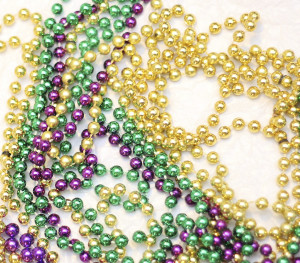
After New Year’s Eve, the next big party of the year is Mardi Gras. Also known as Fat Tuesday and Carnivale, the holiday takes place on February 17 this year. The celebratory aspect of this annual event is now the main focus, but its origin is intricately linked to the Christian religion.
Lent
Mardi Gras always occurs the day before Ash Wednesday, which marks the beginning of Lent. Lent is the six week period before Easter, and is a much more somber time in the church. Traditionally, it was a period of atonement, repentance of sins and self-denial. Rich foods including eggs, butter and meat were forbidden, and it was common for people to fast. Since many flavorful foods were prohibited during Lent, it became popular to consume any in the house during a final party. The French translation of Mardi Gras is “Fat Tuesday,” and reflects the ritual of enjoying these foods on the day before Lent began. These days, it is more customary for people to give up something they enjoy during Lent, such as wine, caffeine or sweets.
How the Date Is Determined
The date of Mardi Gras is dictated by the Christian calendar. It always falls on the Tuesday before Ash Wednesday, but the date is different every year and can occur on any Tuesday between February 3 and March 9. Ash Wednesday is always 46 days before Easter Sunday. Easter is one of the holiest Christian holidays. However, its date is determined by more pagan means; it occurs the first Sunday after the full moon following a spring equinox.
Places Where Mardi Gras Is Celebrated
- Mobile, Alabama
Mobile was the first capital of French Louisiana and the original home of Mardi Gras in the United States. It was first celebrated in the city in the early 18th century. Mobile still has a strong Fat Tuesday tradition and there are parades, parties and other events that occur there every year.
- New Orleans
In 1723, New Orleans became the capital of French Louisiana. The holiday was widely celebrated in the city by the 1730s, with the festivities largely consisting of elaborate society balls. The first New Orleans parade was held in 1837. In 1875, it became a legal holiday in the city, and government offices, businesses and schools are all closed on Fat Tuesday. New Orleans and Mardi Gras are now synonymous. Festivities occur in the city over a period of several weeks, with things culminating on Mardi Gras day. The fun officially begins January 6 on Epiphany, another significant day on the church calendar.
- Others
There are a number of other celebrations that happen around the world, primarily in predominantly Catholic countries. Venice and Rio de Janeiro are famed for Carnivale. Revelers wear masks and elaborate costumes. There are lots of food, drink, music, parades, elaborate balls and other events. General debauchery often ensues.
Mardi Gras Traditions
Mardi Gras is known for many traditions. The parades that occur are a big part of the celebration each year. They are organized and run by “krewes.” Members of the krewes dress up in elaborate costumes and masks and ride on floats. They throw beads and doubloons to excited crowds. Many of today’s krewes evolved from exclusive social clubs, and two of the oldest are Rex and Comus. Krewes often host a ball during the season.
King cakes are another tradition. They are delicious and similar to elaborate pastries. People eat them at work, school and parties. There is a small plastic baby inserted in each cake. The custom is whoever gets the baby in their slice buys the next king cake.
These days, Mardi Gras is much more about having fun than anything else. However, Christian religious traditions have influenced the evolution of this event.

